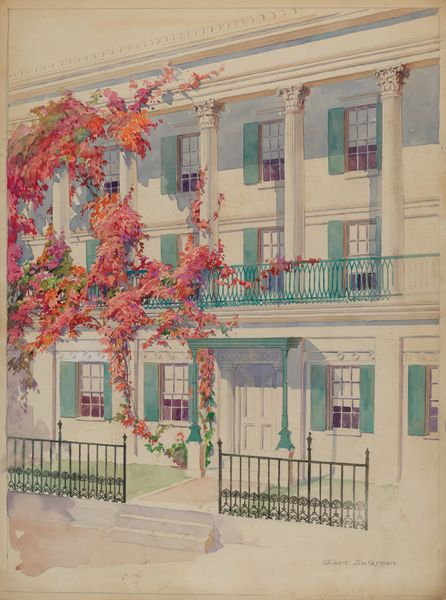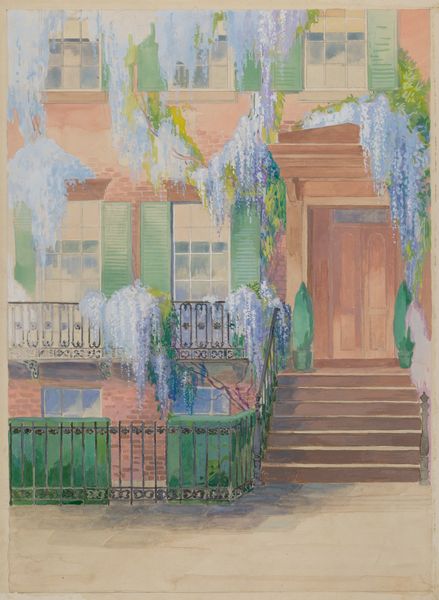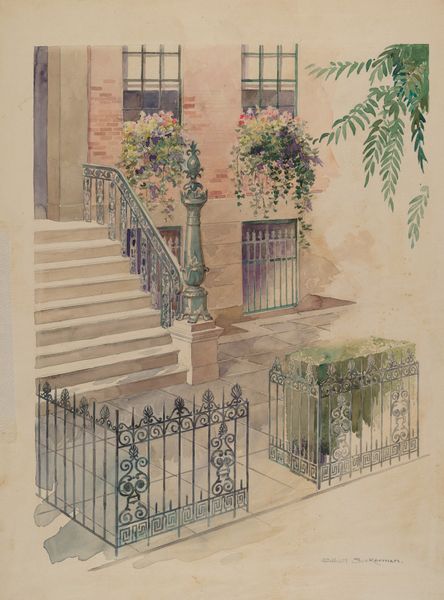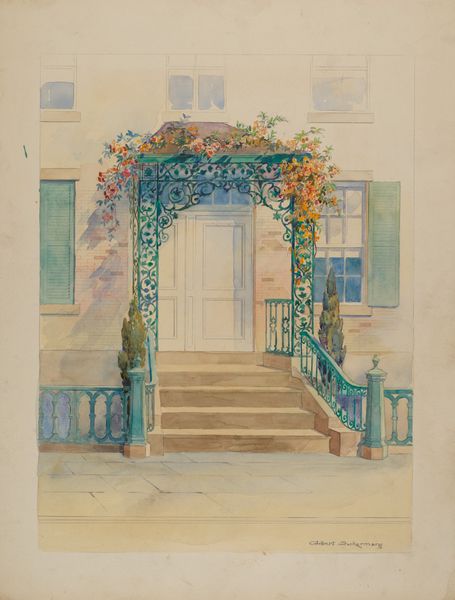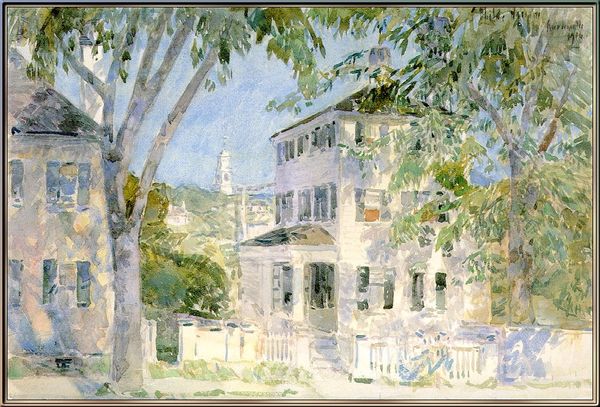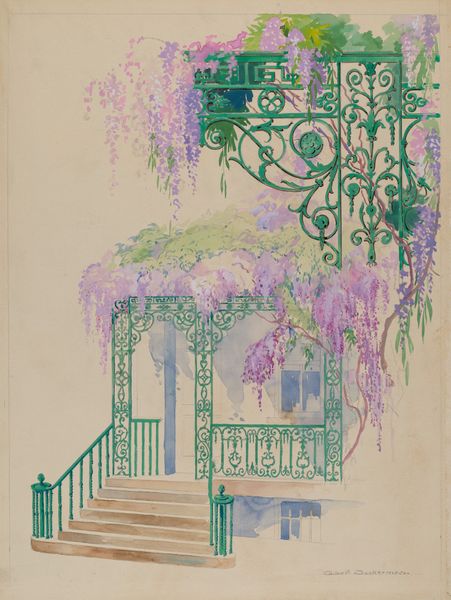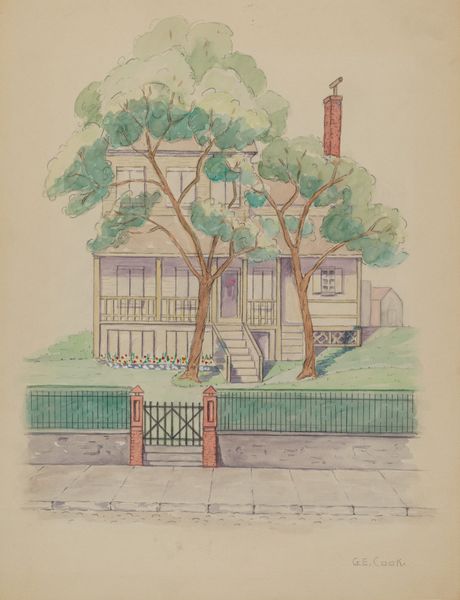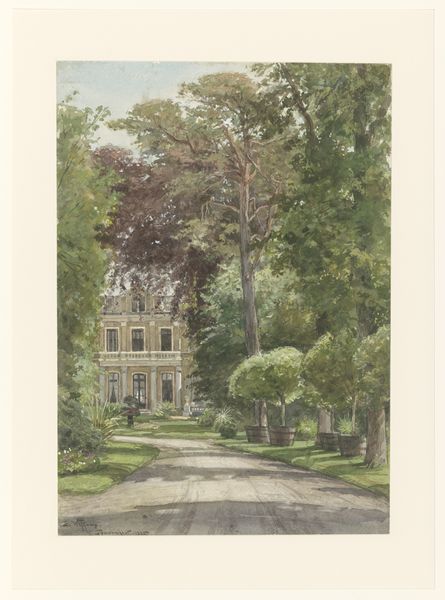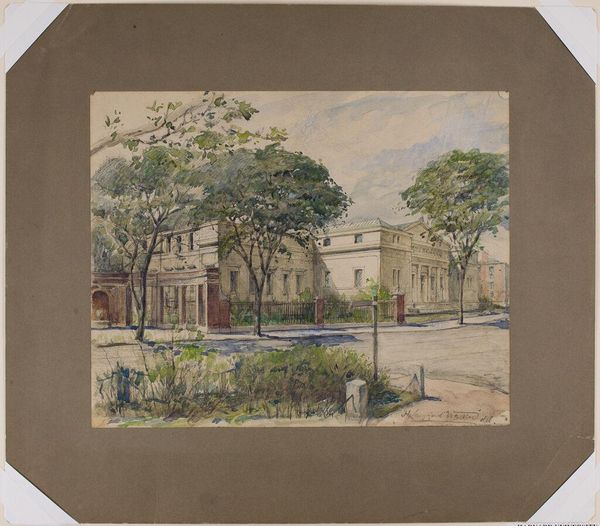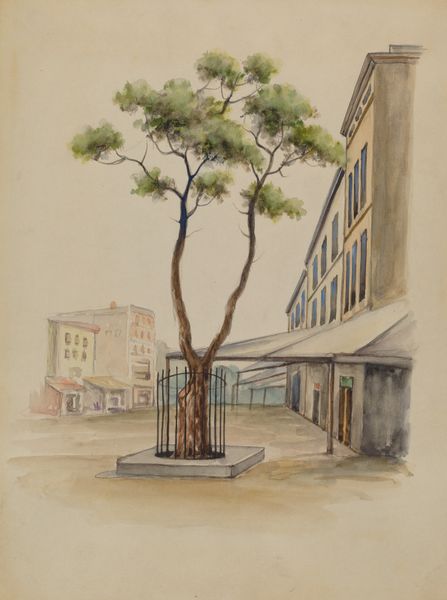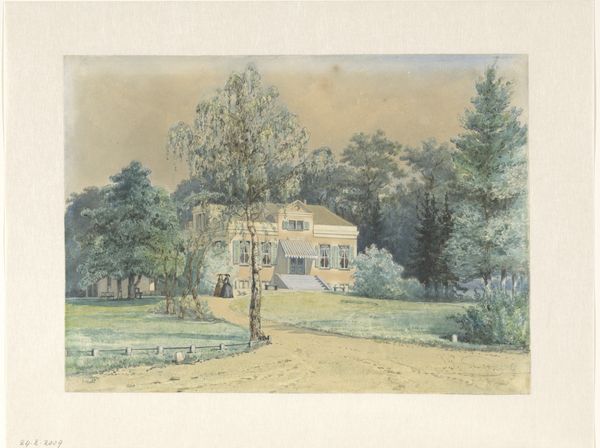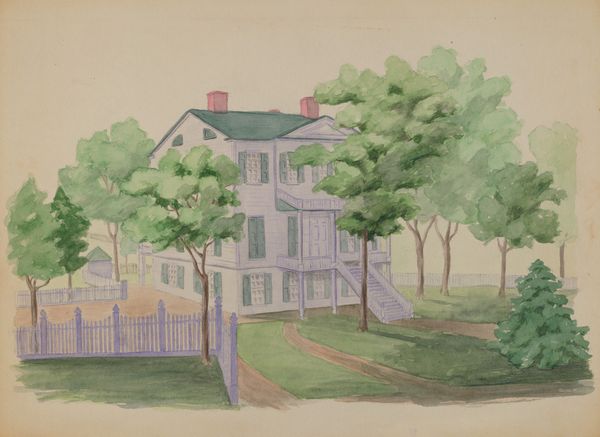
drawing, watercolor, architecture
#
drawing
#
traditional architecture
#
watercolor
#
cityscape
#
architecture
#
realism
Dimensions: overall: 50.8 x 38.7 cm (20 x 15 1/4 in.)
Copyright: National Gallery of Art: CC0 1.0
Editor: Gilbert Sackerman's "Cast Iron Garden Balcony," made with watercolor and drawing techniques between 1935 and 1942, depicts a rather grand building softened by lush vegetation. It feels serene, almost dreamlike. What do you see in this piece? Curator: This building immediately evokes classical ideals with its columns and symmetrical design. However, it's not a cold monument, is it? The pinkish vines, the turquoise shutters...they humanize it. This layering of classical architecture with organic growth can symbolize the ongoing dialogue between structure and nature, reason and emotion. What do you make of the contrast? Editor: I hadn’t thought about it like that. The rigid architecture softened by the free-flowing vines… I see it! The vines almost reclaim the space, suggesting a kind of beautiful decay or natural evolution over time. Curator: Precisely. It raises questions about control versus freedom, permanence versus impermanence. Look closely at the shadows. Notice how they are cast both by the architectural features and the organic vines? Does that create a particular mood or feeling for you? Editor: They definitely add a sense of depth, but also a touch of mystery, I think. They blur the lines between what's solid and what's ephemeral. Curator: Indeed. Light and shadow, structure and nature...it all coalesces. Sackerman has managed to capture something profound about the cyclical nature of existence. What new ideas are you taking away about this cityscape drawing? Editor: I’m definitely seeing more layers than I did initially! I realize the symbols make the ordinary architectural image feel like an intricate conversation across history, and the push and pull of different forces of culture and time.
Comments
No comments
Be the first to comment and join the conversation on the ultimate creative platform.
